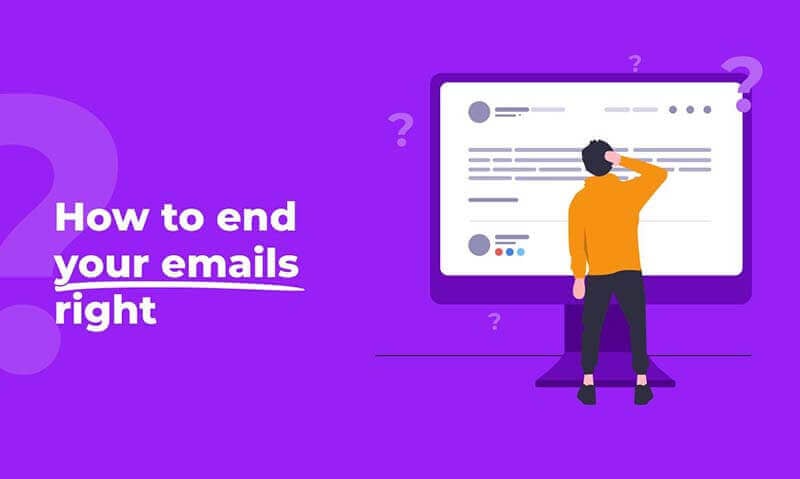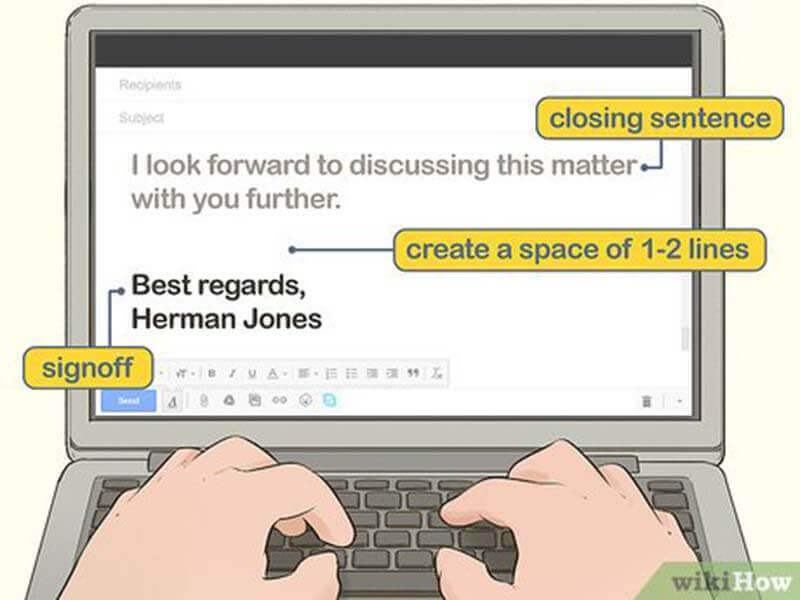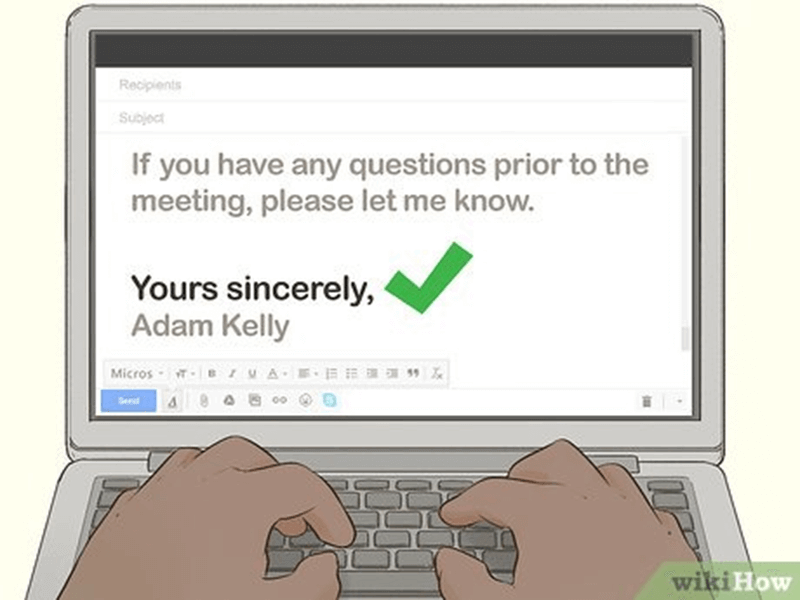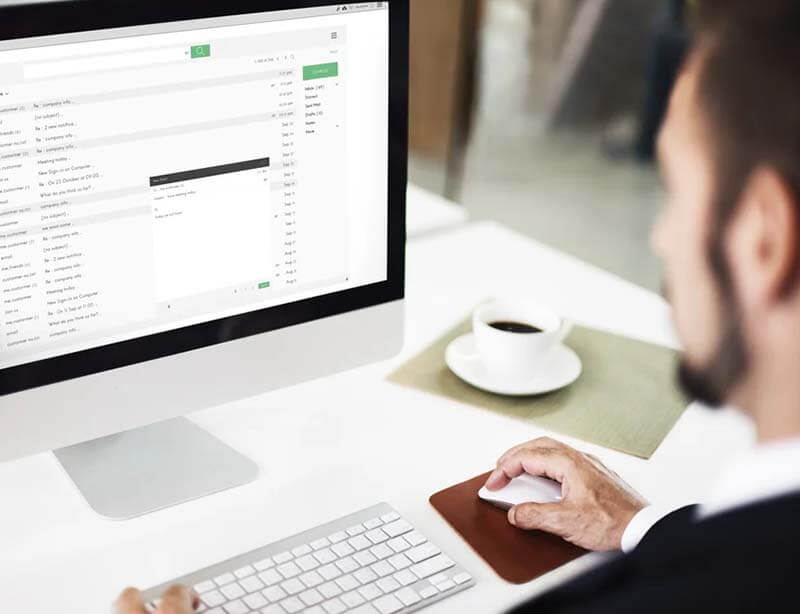How To End an email: 5 Email Sign-Offs to Use and 5 to Avoid
Emailing is all about context, and email closings are no exception. While "Best regards" is entirely acceptable for professional communication, it may come across as stiff and distant to your employees. The same is true for the majority of email closings. Here are a few factors to consider while selecting the finest email sign-off.
5 Email Sign-Offs to Use
1. Regards
Although it may appear remote and abrupt, this is a frequent closure for official emails. If you're searching for a friendlier sign-off, consider the "regards" options below.
- Kind Regards
This email closure is much nicer and warmer than a basic "Regards," making it an excellent choice for commercial correspondence. According to reports, it generates a 53.9% response rate.
- Kind Regards
This email closing is less formal than "Kind regards," but it's still a good choice for business emails.
2. Sincerely
This is a suitable closing for cover letters. Otherwise, it may come out as excessively stuffy and formal, particularly in more casual emails.
3. Best wishes
This welcome is appropriate for business emails because it is warm but not overly informal. Simply make sure it matches the tone and subject of your communication. Writing hurtful comments in an email and then signing off with "Best wishes" is a bad idea.
4. Best
According to Business Insider, this is the best email sign-off. "Best" is a safe and neutral choice for most situations. At the same time, if you think this email conclusion is too casual, you can choose "Best regards" for the first email.
5. Thanks
If you truly want to convey gratitude, this email closure is appropriate. "Thank you" is pleasant and professional, but it should be avoided in more formal correspondence. Remember that, like "Thank you in advance," this sign-off may convey an expectation. If you don't want to appear overly demanding, choose another email closure.
100% Permission Based Targeted Mailing Lists
5 Email Endings To Avoid
In a professional setting, each email you send reflects not only on you as an individual but also on the image and reputation of your company. Therefore, it is essential to take care in crafting the closing of your emails to ensure a polished and professional impression. Avoiding certain phrases and using more formal, courteous language can go a long way in promoting a positive image for both yourself and your company. Since we have discussed what to use, let’s focus on what you must avoid.
1. Yours truly
"Yours truly" is considered a traditional and formal way to close an email, but in recent years it may be seen as outdated and overly formal. It can come across as stiff or insincere, particularly in emails where a more casual or friendly tone would be more appropriate
2. Thx or Rgrds
This is a strict no in business correspondence. Such a sign-off just displays your negligence and disdain. They may be appropriate for emails with friends or colleagues that you have a close relationship with. However, in a professional context, it is best to use more formal closing phrases such as "Sincerely," "Best regards," or "Kind regards." These phrases convey professionalism and respect, leaving a positive impression on the recipient and aligning with the image of your company.
3. Love
Using "Love" as a closing in a professional email can be seen as unprofessional and too personal, particularly when communicating with colleagues, clients, or supervisors. It can also be seen as inappropriate, as it may imply more than you intend to.
4. XOXO
"XOXO" is commonly used as a closing in personal or informal emails or text messages, and is an abbreviation of "hugs and kisses." In a professional context, using this kind of closing is considered unprofessional and too casual. It can come across as unprofessional and too familiar and can imply a level of intimacy that is not appropriate in a professional setting.
Buy 100% Opt-In Job Title specific Lists
Contact Us for Marketing Campaigns
5. Yours Faithfully
“Yours faithfully" is a traditional and formal way to close an email, but it is usually used when the recipient's name is not known. It is considered outdated and overly formal in modern business communications.
6. Additional Tip – No Sign-Off
Not signing off in an email can come across as rude or abrupt. It is considered standard practice to include a polite closing such as "Sincerely" or "Thank you" before your name, as it indicates that the message has come to a close and gives the recipient a sense of closure. Additionally, it can also help to establish a professional tone in communication.
How To End An Email: Best Tips & Tricks
When you write a professional email—for work or school, in your job search, or in a personal situation involving a business—the ending of your message can break or make a lasting positive impression. As a result, knowing how to close an email professionally is essential.
1. Review the email structure
Review the email's body before writing a closing that effectively finishes the entire message. This might assist you in determining how to relate your conclusion to the general purpose of the communication in order to remind the receiver of the information they just read and what you want from them. Rereading the message allows you to better comprehend the tone of the email.
2. Show your appreciation
Make your ending sentence one to two sentences lengthy, and thank the reader for their time. This is a respectful way of appreciating the reader for taking the time to read your entire email. Many professionals who read a courteous concluding note may feel compelled to reciprocate by writing a response or prioritizing the work you requested of them.
3. Add a call to action
After expressing gratitude or appreciation to the reader, a clear and direct call to action can help move the conversation forward and achieve your desired outcome. In a business context, Including a call to action in your email closing can be an effective way to encourage the recipient to take action or respond to your request.
4. Sign off with your full name
Including your full name below your closing statement is an essential step in ensuring that your recipient can easily identify who you are and how to respond to your message. This is especially important in a professional context, such as job applications, where it can be helpful for hiring managers to remember your name and how you fit into their recruitment process.
5. Include your professional title
You may provide your current job title to help the recipient comprehend your professional standing. On certain occasions, you may wish to exclude your work title, but in most cases, providing a title is a useful approach to demonstrate what you do.
Wrap-Up
Choosing the appropriate email sign-off is difficult. That's why skipping the conclusion is so appealing. Do not attempt it! Always provide a suitable conclusion, especially in initial communications. This demonstrates to the recipient that you take your correspondence seriously and take care to be courteous. Follow the DOs and DONTs listed above to end your email professionally and leave a good impression on your recipients.








